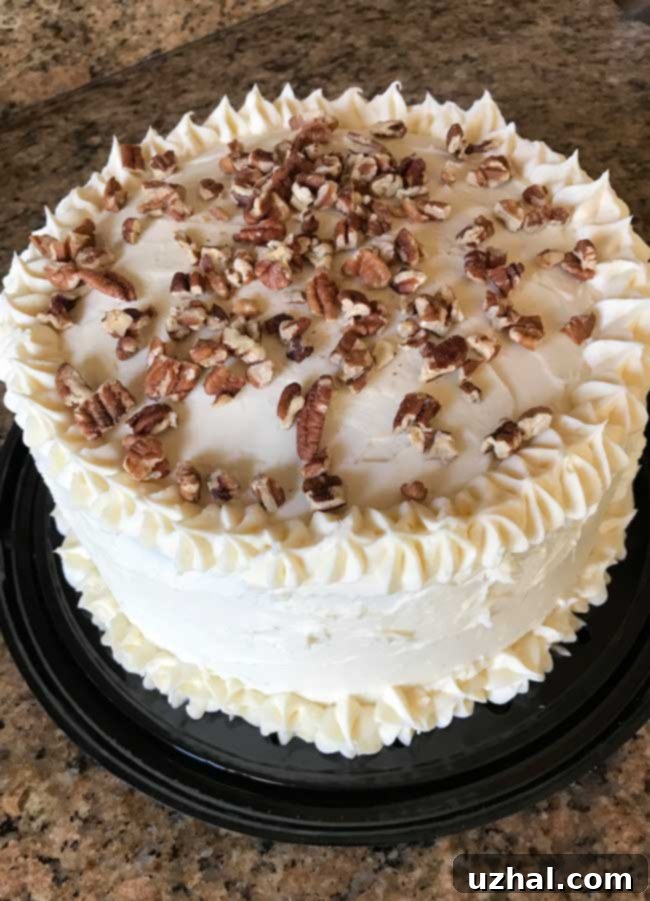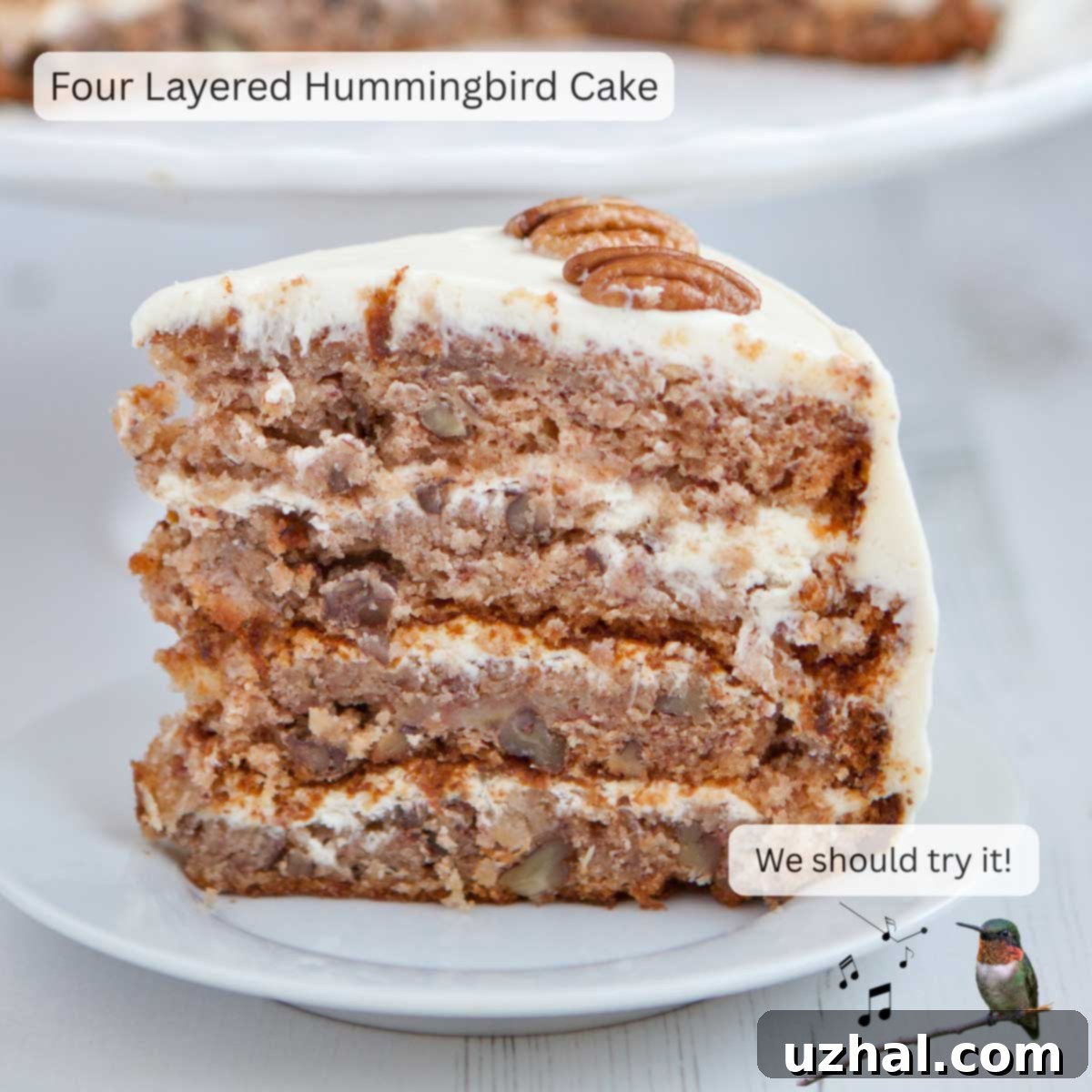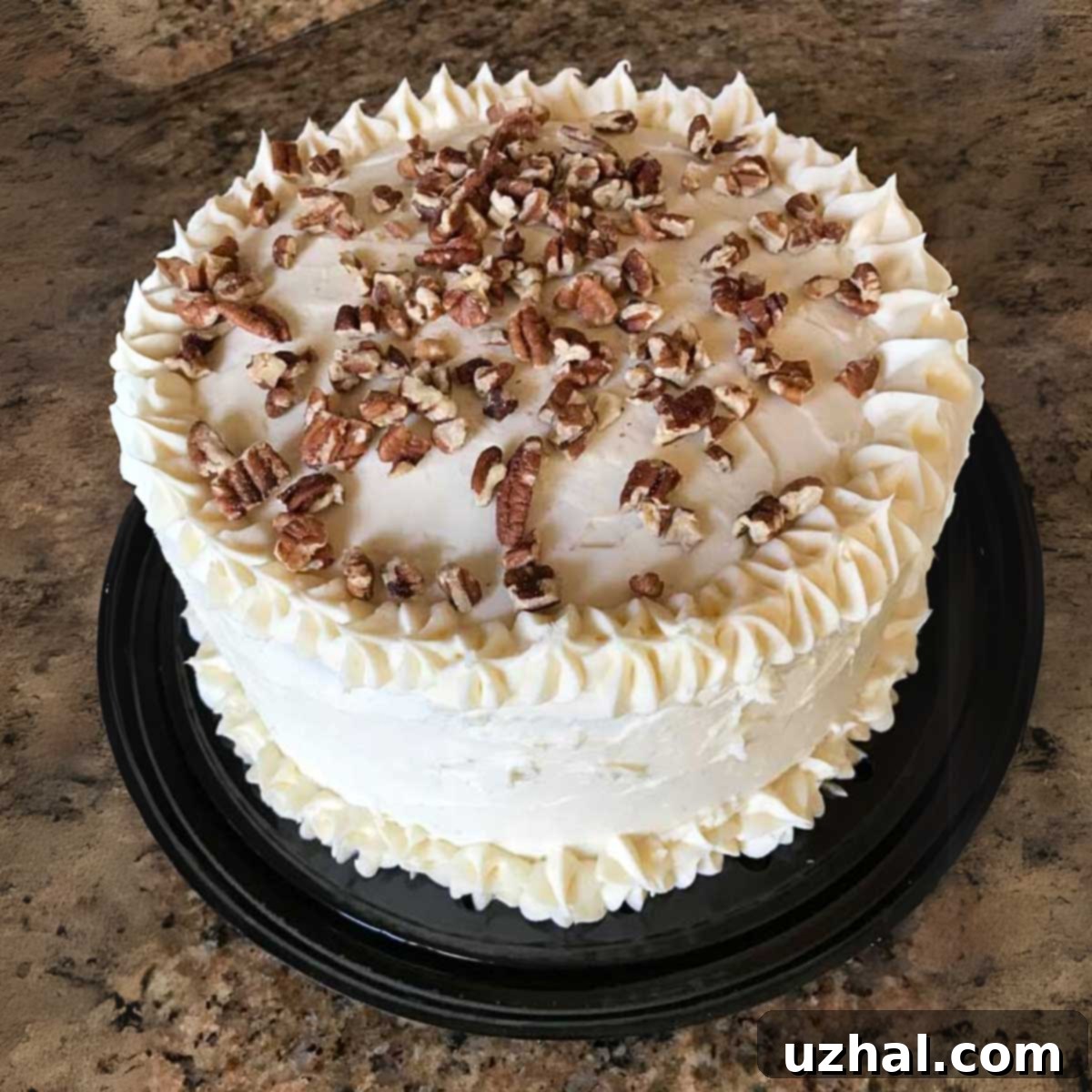The Ultimate Guide to Classic Hummingbird Cake: A Southern Living Legend
Few desserts capture the heart and soul of Southern baking quite like the Hummingbird Cake. Renowned for its unparalleled moistness, tropical flavors, and rich cream cheese frosting, this cake is a true showstopper. It’s not just a dessert; it’s a culinary icon, celebrated for its unique blend of ripe bananas, crushed pineapple, and crunchy pecans, all spiced with a hint of cinnamon. Its popularity soared to legendary status after its debut in Southern Living Magazine, becoming, in fact, the most requested recipe in the magazine’s long and storied history.
The journey of the Hummingbird Cake to fame began in 1978 when it was submitted to Southern Living by Mrs. L.H. Wiggins of Greensboro, North Carolina. While Mrs. Wiggins introduced it to a wider audience, the cake itself wasn’t entirely new. It had circulated through Southern kitchens for years prior, often appearing under charming, descriptive names such as Grannie’s Cake or Nothing Left Cake – a testament to its irresistible appeal that ensures not a single slice remains. Despite its widespread adoration, the true origin of the intriguing name Hummingbird Cake remains shrouded in a delightful mystery, sparking much speculation and delightful folklore.

Theories abound regarding the cake’s enigmatic moniker, each adding to its charm and mystique:
- Some suggest the cake is so exquisitely delicious that those who taste it can’t help but hum with delight. This theory, while a little whimsical, perfectly captures the joy this cake brings.
- Another popular idea draws a parallel to hummingbirds themselves. These tiny birds are known for their love of sweet nectar, and this cake, bursting with sweet fruit like pineapple and bananas, offers a similar burst of natural sweetness.
- Perhaps the most common theory posits that just as hummingbirds flit quickly from flower to flower, people consume this cake with such speed and enthusiasm that it disappears in “hummingbird style.” It’s hard to resist taking a second, or even third, slice!
- A more mundane, yet still charming, theory suggests that someone was simply baking the cake and happened to glance out their window to see a hummingbird, inspiring the name. While not as dramatic, sometimes the simplest explanations hold truth.
- And for a touch of playful exaggeration, some even joke that eating the cake could lead to an unexpected encounter with actual hummingbirds, drawn in by its undeniable sweetness!
Regardless of its true namesake, the Hummingbird Cake has firmly established itself as a beloved Southern classic, bringing smiles to countless faces at potlucks, family gatherings, and special celebrations. Its vibrant flavors and comforting richness make it a truly unforgettable dessert.
Mastering Your Hummingbird Cake: Essential Baking Notes and Tips
Creating the perfect Hummingbird Cake is a delightful process, and a few key tips can elevate your baking experience and ensure a consistently delicious result. Here’s what you need to know to make your cake a masterpiece:
- Bananas: Chopped vs. Mashed: The original Southern Living recipe specifically calls for chopped bananas, which provide delightful pockets of soft fruit throughout the cake, adding to its texture and moisture. While some modern versions suggest mashed bananas, which can make the cake even more uniformly moist and hide the banana pieces from picky eaters, we recommend sticking to chopped for that authentic texture. Whichever method you choose, ensure your bananas are ripe – yellow with brown spots – for the best flavor and natural sweetness. Never omit them, as they are crucial for the cake’s signature taste and incredible moisture.
- To Nut or Not to Nut: Pecans are an integral part of the traditional Hummingbird Cake, adding a wonderful crunch and nutty depth that complements the sweet fruits and spice. However, if you or your guests have nut allergies or simply prefer a nut-free cake, feel free to omit them. For those who love nuts, consider lightly toasting the chopped pecans before adding them to the batter. This simple step significantly enhances their flavor and aroma, making them even more irresistible. Walnuts can also be a delicious substitute if pecans aren’t available.
- The Importance of Oil for a Flaky Texture: It can be tempting to reduce the amount of oil in a recipe, especially for those looking to cut down on fat. However, for Hummingbird Cake, the oil is paramount for achieving its characteristic moist, tender, and somewhat flaky crumb. If you reduce the oil, you’ll find the cake becomes denser, more akin to a banana bread or quick bread, rather than the light, airy, yet rich cake it’s meant to be. For the best, most authentic results, always use the full amount of oil specified in the recipe. This fat contributes significantly to both the texture and the longevity of the cake’s freshness.
- Use Freshly Opened Oil: The type and freshness of your vegetable oil can subtly, yet significantly, impact the flavor of your cake. Old or rancid oil can impart an unpleasant, off-flavor that will detract from the delicate balance of fruit and spice. Always use a freshly opened container of neutral-flavored vegetable oil (like canola, sunflower, or corn oil) to ensure your cake tastes as fresh and delicious as possible. This small detail makes a big difference in the final taste profile.
- Layering Options: Two, Three, or Four? The versatility of Hummingbird Cake allows for various layering configurations. Traditionally, it’s often made as a two-layer cake, providing a generous ratio of cake to frosting, which many enthusiasts prefer. However, for a more elegant presentation and a slightly different texture experience, you can opt for three layers. I’m particularly intrigued by the idea of a four-layer version, achieved by baking two thicker layers and then carefully splitting each one horizontally. This creates a visually impressive cake with more distinct layers of cake and frosting, perfect for special occasions. Adjust your baking time accordingly if you choose thicker or thinner layers.
- Room Temperature Ingredients: Always ensure your eggs, and especially your cream cheese and butter for the frosting, are at room temperature. This allows them to incorporate smoothly, creating a more uniform batter and a perfectly smooth, lump-free frosting. Cold ingredients can lead to a lumpy batter or frosting, and an unevenly baked cake.
- Don’t Overmix the Batter: After combining the wet and dry ingredients, mix just until moistened. Overmixing can develop the gluten in the flour, resulting in a tougher, less tender cake. The key is to achieve a smooth, but not overly worked, batter before stirring in the fruits and nuts.

By keeping these notes in mind, you’re well on your way to baking a Hummingbird Cake that will undoubtedly become a new favorite in your home, carrying on its rich Southern legacy.
- Favorite Hummingbird Cake
- Eating Well Brownies
- Blueberry Oat Bars Without Eggs
- Layered Cream Cheese Brownies
- Layered Chocolate Pie for New Year’s Eve
Authentic Hummingbird Cake Recipe: A Southern Tradition
This recipe provides you with the classic Southern Living Hummingbird Cake, known for its incredible moisture, tender crumb, and perfect balance of sweet and tangy flavors. Paired with a luscious cream cheese frosting, this cake is guaranteed to impress. It’s surprisingly easy to make, even for novice bakers, yet yields a dessert worthy of any special occasion.

Hummingbird Cake
Anna
Pin Recipe
Ingredients
- 3 cups all-purpose flour (380 grams)
- 1 teaspoon baking soda
- 1 teaspoon salt
- 2 cups sugar (400 grams)
- 1 teaspoon ground cinnamon
- 3 large eggs beaten
- 1 ½ cups vegetable oil**
- 1 ½ teaspoons vanilla extract
- 8 oz can crushed pineapple, undrained
- 1 cup chopped pecans
- 2 cups chopped bananas
- ½ cup chopped pecans (or up to 1 cup), plus more for garnish
Cream Cheese Frosting (will make more than you need)
- 1 pound cream cheese softened
- 2 sticks unsalted or salted butter, softened
- 5-6 cups powdered sugar, sifted, plus more as needed, sifted (start with 500 grams and use up to 600)
- 1 teaspoon vanilla extract
- Pinch or two of salt – omit if using regular salted butter
Instructions
-
Preheat oven to 350 degrees F (175 C). Thoroughly prepare your cake pans by spraying three 9-inch round cake pans with a flour-added cooking spray, or by greasing them with shortening and then dusting generously with all-purpose flour. This crucial step ensures your cake layers release cleanly.
-
In a large mixing bowl, combine the dry ingredients: flour, baking soda, salt, sugar, and ground cinnamon. Whisk them together thoroughly until well combined. Next, add the wet ingredients: the beaten large eggs, vegetable oil, and vanilla extract. Stir gently with a spoon or spatula until the dry ingredients are just moistened. Be careful not to overmix the batter, as this can lead to a tough cake. Finally, fold in the crushed pineapple (undrained), chopped pecans, and chopped bananas until evenly distributed.
-
Divide the batter evenly among the prepared cake pans. Bake for approximately 25-30 minutes, or until a wooden pick inserted into the center of a cake layer comes out clean. Baking times may vary slightly depending on your oven and pan size. Once baked, cool the cake layers in their pans on wire racks for 10 minutes. After 10 minutes, carefully invert the cakes onto the wire racks to cool completely. Ensure they are fully cooled before frosting to prevent the frosting from melting.
-
While your cake layers are cooling, prepare the indulgent cream cheese frosting. In a large bowl, beat the softened cream cheese and softened butter at medium speed with an electric mixer until the mixture is light, creamy, and perfectly smooth. Gradually begin to add the sifted powdered sugar, beating at a low speed to prevent a cloud of sugar. Once a few cups are incorporated, increase the speed to medium-high and beat until the frosting is light and fluffy. It’s a good idea to taste the frosting after adding 3-4 cups of sugar – you can add more sugar if you prefer a sweeter frosting or if you desire a thicker consistency. Finally, beat in the vanilla extract. If you are using unsalted butter, add a pinch or two of salt to enhance the flavors and balance the sweetness.
-
Once the cake layers are completely cool, it’s time to assemble. Place one cake layer on your serving platter. Spread a generous amount of cream cheese frosting over the top. Carefully place the second cake layer on top, followed by another layer of frosting. If you made three layers, repeat the process. Finally, spread the remaining cream cheese frosting evenly over the top and sides of the entire cake. For a beautiful finish and added crunch, sprinkle the remaining ½ cup of chopped pecans (or up to 1 cup, if desired) over the top of the frosted cake. Serve and enjoy!
Notes
